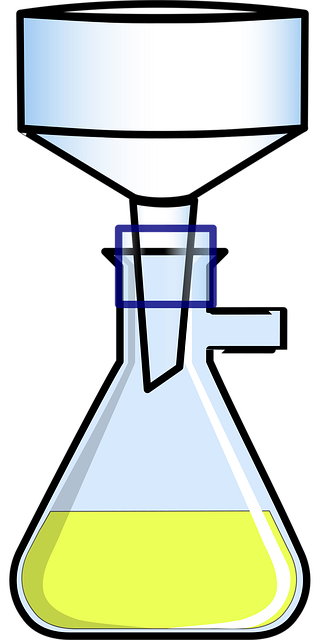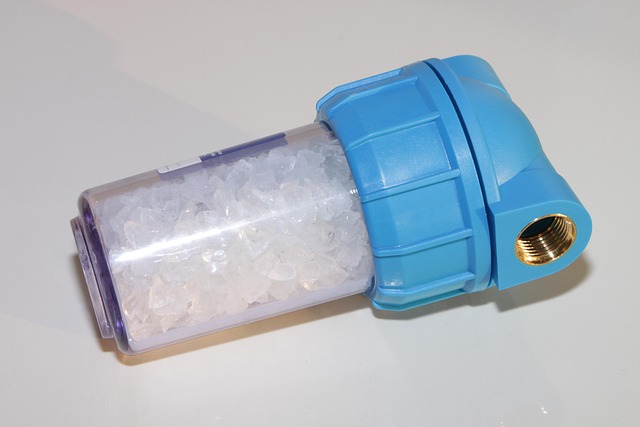Water hardness, caused by mineral deposits like calcium and magnesium, can damage plumbing systems and appliances. Regular testing identifies issues early, enabling proactive measures like water softening or cleaning routines. Accurate measurement categorizes water as soft, moderately hard, or hard (in ppm), guiding mitigation strategies. Installing water softeners removes excess minerals, preventing pipe scale buildup and improving appliance efficiency.
Regularly testing your water’s hardness levels is essential for maintaining a healthy home and appliances. Understanding the impact of mineral deposits, such as calcium and magnesium, can prevent costly damage from scaling and corrosion. This article guides you through identifying common mineral deposits, choosing suitable testing methods, interpreting results accurately, and implementing solutions to manage water hardness effectively.
- Understand the Impact of Water Hardness
- Identify Common Mineral Deposits
- Choose Suitable Testing Methods
- Interpret Test Results Accurately
- Implement Solutions for Managed Hardness
Understand the Impact of Water Hardness

Understanding water hardness is crucial in maintaining a clean and efficient plumbing system. High mineral content, or hard water, can lead to the accumulation of mineral deposits inside pipes, fixtures, and appliances. Over time, these deposits can cause clogs, reduce water pressure, and even damage water heaters and other devices. By regularly testing your water for hardness levels, you can identify potential issues early on and take proactive measures to prevent costly repairs.
Knowing the extent of water hardness allows homeowners and professionals to implement appropriate solutions. This might include using water softeners to mitigate mineral buildup or adopting regular cleaning routines to maintain plumbing health. Such precautions not only extend the lifespan of plumbing infrastructure but also ensure a consistent supply of clean, safe water for various household uses.
Identify Common Mineral Deposits

Hard water is primarily caused by mineral deposits, with calcium and magnesium being the most common culprits. These minerals often come from natural sources, such as rocks and soil, which leach into groundwater. Identifying these mineral deposits is crucial in understanding and managing water hardness levels.
Calcium and magnesium can build up in various forms, like scale on faucets and showerheads, or they can accumulate deeper within pipes and appliances. Other common mineral deposits include iron, manganese, and hard water stains. Regular testing allows homeowners to monitor these deposits and take proactive measures to soften the water, ensuring efficient plumbing and appliance performance.
Choose Suitable Testing Methods

When testing water for hardness levels, choosing the right methods is key to getting accurate and reliable results. Different testing kits offer various advantages, catering to specific needs. For instance, chemical test strips provide quick and easy readings suitable for regular monitoring at home or in small-scale applications. These strips detect common minerals like calcium and magnesium that contribute to water hardness.
For more precise and comprehensive analysis, consider using laboratory-grade testing methods. These often involve more sophisticated equipment, such as refractometers or ion selectivity electrodes. These tools can measure a broader range of minerals, including trace elements, offering deeper insights into the mineral deposits within your water supply. This is especially important for larger households, commercial settings, or areas with known water quality issues.
Interpret Test Results Accurately

When testing your water for hardness levels, it’s crucial to interpret the results accurately to understand the presence of mineral deposits. Hard water is typically characterized by high levels of calcium and magnesium, which can lead to the accumulation of mineral deposits in pipes, appliances, and water-using devices. A water hardness test kit provides a simple way to measure these levels, usually indicated as parts per million (ppm) or milligrams per liter (mg/L).
Accurate interpretation involves comparing the test results against established standards or guidelines. For instance, water with a hardness level below 150 ppm is generally considered soft, while water between 150 and 400 ppm is moderately hard. Hard water (above 400 ppm) can lead to scaled pipes and reduced efficiency in heating systems. Understanding these levels helps homeowners take appropriate action, such as installing a water softening system or using specific cleaning products designed to prevent mineral deposits from forming.
Implement Solutions for Managed Hardness

Regularly testing your water’s hardness levels is a crucial first step, but what do you do once you identify elevated mineral deposits? The good news is, there are numerous solutions to manage and mitigate water hardness at home. One effective approach involves investing in a water softener system. These devices use various methods like ion exchange or reverse osmosis to remove excess minerals from your water supply, thereby reducing hardness.
By installing a water softener, you can prevent mineral deposits from building up in your pipes, appliances, and fixtures. This not only extends the lifespan of your plumbing but also ensures cleaner, softer water for your household needs. Additionally, many modern water softeners offer energy-efficient operation and advanced control systems, making them convenient and sustainable solutions for managing water hardness.
